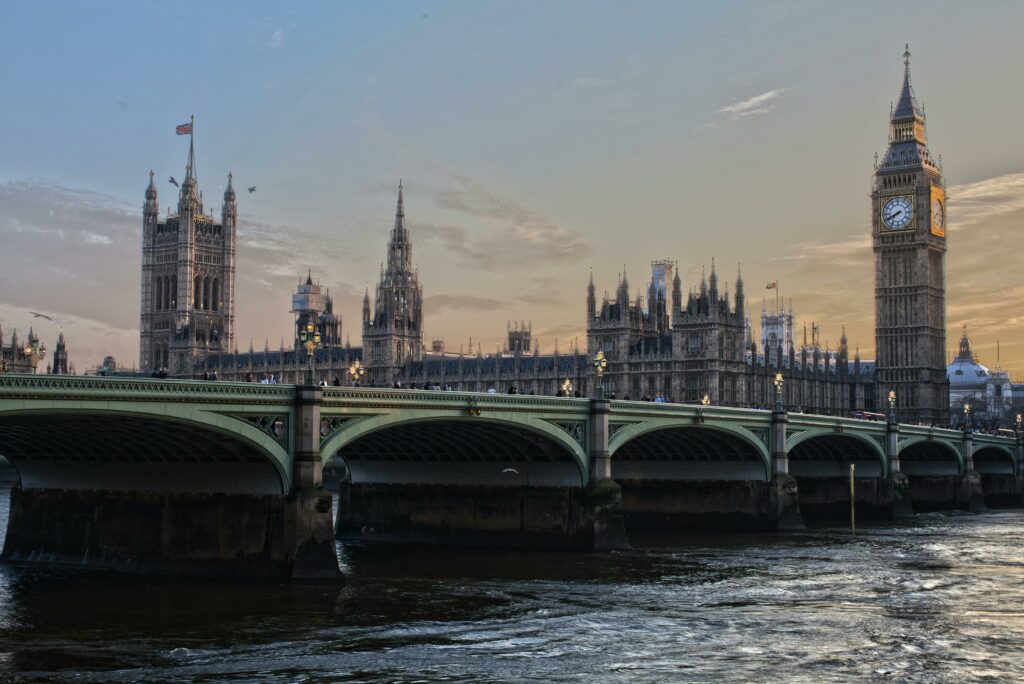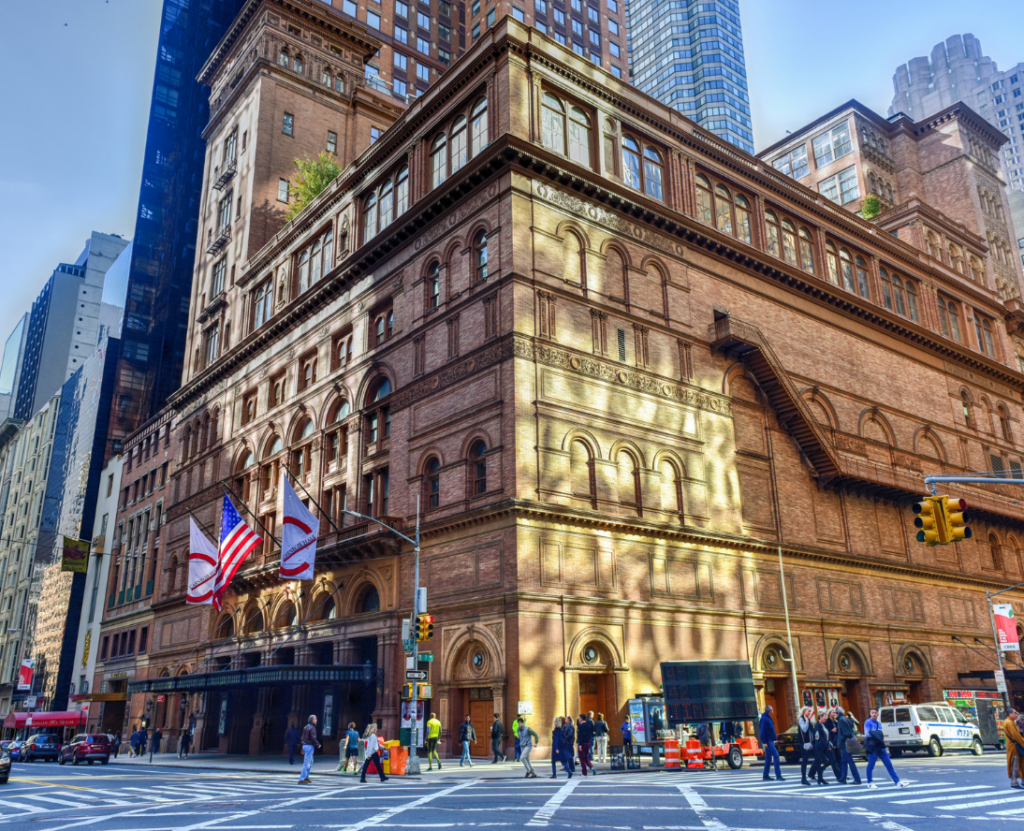
Paul Johnson, Director of the Institute for Fiscal Studies and the BBC’s ‘go-to economist’ will visit the island on 28thNovember 2024 for a free talk analysing the UK Government’s Autumn Budget.
The Autumn Budget has now been made public and changes to employers’ national insurance rates, capital gains, and inheritance tax have been revealed. Guernsey’s financial services professionals will be paying particular attention to the moves to close what Labour calls ‘tax loopholes’ in its pre-election manifesto.
Mr Johnson is a well-known economist who regularly works with the BBC, The Times, and other publications and will be commenting on the Budget announcements and other tax related matters. As well as working as an economics expert, Mr Johnson published his celebrated book, ‘Follow the Money’, last year. The book explores Britain’s economic position across the years up to the disastrous ‘mini budget’ of 2023. Mr Johnson has also just this week been announced to be taking up the role as provost of Queens College, Oxford in 2025.
The event will take place at St Pierre Park Hotel and will be hosted by local law firm Ashton & Co. Dr Raymond Ashton will briefly touch on the potential impact of changes to the non-domicile system before introducing Mr Johnson ahead of his analysis and the presentation. This will be followed by an audience Q&A. Copies of Dr Ashton’s book, ‘Ashton on Company Law’ will also be available following the talk.
Mr Johnson said: “The Channel Islands have always been in a unique economic position and the Budget has possible wider implications for people living on Guernsey. I look forward to breaking down the highlights of Labour’s Autumn Budget and I encourage the island’s business community to come armed with some interesting questions. My thanks go to Ashton & Co for inviting me to Guernsey.”
Dr Ashton said: “Paul’s unrivalled knowledge of the economy makes him ideally placed to comment on the Autumn Budget. I am very much looking forward to engaging with him for this insightful event and hosting such a well-regarded economist to our shores.”
The event is free to attend, though spaces are limited. Doors will open from 16:30 and the event will conclude no later than 18:00.
Anyone interested in attending can reserve their space by contacting: jane@raymondashton.com.

INTRODUCTION
On Wednesday June 19th a headline appeared in the Daily Mail – Labour’s Secret Tax Rise Dossier. Under this title it said that labour was under pressure to ’come clean’ after a bombshell dossier laid out dramatic tax rise plans. It seems the proposals were put forward by a group of Labour MPs including Sir Keir Starmer. Evidently, it put forward six tax raids which would yield £60 million This short paper will look at the six proposals
Proposal 1 – National Insurance on other forms of income.
This would extend National Insurance to all sources of income including dividends, interest and property income. Given the shortage of rental properties this would reduce rental yields and strong mate the property sector and by similar reasoning the stock market. There is also a hint that the National Insurance increased would be extended to working pensioners in the form of higher contributions by them. This is estimated to raise £12 billion.
Proposal 2 – Removal on the limit of National Insurance Payments,
This is equally draconian. It would remove the current cap on National Insurance. Workers currently pay 8% on all earnings up to £50,268 and 2% on income above this. Under the new plan higher earners would pay the main rate on all earnings. This would raise £20 billion. Governments of all descriptions have until recently sought to increase National Insurance and have seen it as a ‘cash cow’. The effect is to increase the cost of employment and potentially result higher levels of unemployment and act as a deterrent to expanding the work force by employers. By making employment more expensive this will thwart the Labour Party’s economic growth policy or alternatively they take the view that economic growth will permit higher wages.
Proposal 3 – Extending Capital Gains Tax.
This has been hinted at in the election debates, equalising capital gains tax (“CGT”) with income tax rates. It must be admitted that when a comprehensive CGT was introduced in 1964 short term gains were taxed at income tax rates although a Labour Chancellor in 1969 simplified the tax and taxed (short or long term) all gains at 30%. For this purpose short term gains were defined as gains as those realised within a year and long term gains, gains realised after a year. The estimated yield from this has been estimated at £16 billion and in my view this is a measure I can see both a Labour and Conservative government resorting to as it is very much a ‘back door’ way of raising money.
Proposal 4 – Inheritance Tax
This proposal would involve measures to end the reliefs for agricultural property and business assets. Similar proposals are not new and date back to 1974 when Denis Healey introduced Capital Transfer Tax (“CTT”). This proposal was met by fierce opposition by a certain Margaret Thatcher, then in opposition and as part of her electioneering strategy as she was in a leadership contest at the time against William Whitelaw. Eventually the proposals as they relate to business assets and agricultural property were diluted. These measures would only raise £4 billion and potentially would have a damaging effect on the economy. If the Labour Party do believe in economic growth the measure will ‘die quietly’.
Proposal 5 – Council Rates
This measure that has been mooted in election debates reform of property (rates) tax to make it “fairer”. Whilst low cost homes might see rates lowered those in more expressive properties could see sizeable increases, double has been mooted. This is a relatively soft target and might be quite attractive to both parties.
Proposal 6 – Wealth
The last involves tax increases and has been described as the “jackpot tax” on ‘extreme wealth’ a form of wealth tax and is estimated to raise a £10 billion a year. I would not discount this as there was a “one off” special charge on investment income, in the budget of 1968. On the basis that previous Labour Government have threatened a wealth tax before but withdrawn proposals after a period of time implies that this is a difficult issue and previously Rachel Reeves has stated that a wealth tax would not be introduced. These were based on the Swedish model, but Sweden has withdrawn the wealth tax, sensibly! The introduction of such a tax would lead to many residents leaving the UK and justify the Sun’s headline before the 1992 election day ‘would the last person to leave the country please turn off the lights’.
Conclusions
These proposals cumulatively would have a negative effect on the economy to say the least. The danger is that a Labour Government would introduce them (and cause damage) and then withdraw or reduce them after the harm has been done, a typical reaction of a Labour Government. For this purpose the first budget introduced by Denis Healey increased company taxation significantly but was reversed in November 1974 by the ‘life saver’ stock relief which deferred corporate tax and saved the economy.
The real issue is that independent bodies such as the Institute of Fiscal Studies have said both parties face a very difficult financial position after the election. Both parties seem to ignore this and are silent on the point. Raising money will be required by both parties. The proud boast of the Labour Party is that each of their proposals has been properly costed. The problem will be more fundamental given the financial position they find themselves in after the election. The same can be said of the Conservatives who say that they are a tax cutting party – the problem will be the very difficult financial position they face based on the current future commitments.
What should we make of this for Guernsey? Good, as taxes will have to rise whichever party is elected, which means Guernsey will be an attractive alternative to the UK, which means a boost for the open market and more.
Raymond_Ashton_14_June_2024Raymond Ashton takes a look at the role of competition regulation in the island
The-rules-of-competition-16-August-2023Raymond examines the effect raising interest rates could have on the housing market in Guernsey
Riding-out-the-storm-19-July-2023Raymond Ashton gives a brief history of philanthropy in the last couple of centuries and outlines the opportunities to the wealthy.

Before looking at the subject in more detail it is appropriate to define the term philanthropy.
A good working definition is: ‘The desire to promote the welfare of others expressed especially by the generous donation of money to good causes and can involve donating time, effort and other forms of altruism’
This is a good starting point for the famous 19th Century philanthropists such as Andrew Carnegie, D Rockefeller and Titus Salt. Subsequent contributions have been made by Alfred Nobel, Bill Gates and many other high-profile people such as Elton John and pop stars who have made substantial contributions to research into Aids and importantly peace.
It is important to remember the origins of philanthropy. While the 19th Century was a period of substantial economic growth and profit, the infrastructure of even advanced economies such as the US and Europe was rudimentary. As a consequence, taxes were low and philanthropy, in its various forms, attempted to fill gaps in the infrastructure. Whilst substantial gifts were made it must not be forgotten the voluntary work, particularly in nursing.
One of the most famous philanthropists of the time was the Scottish-born US entrepreneur Andrew Carnegie (1835-1919). While he made fortunes in making steel and was famous for the investment in the Pullman Car Company, he was also famous for his generosity in setting up public libraries contributing to charity generally and establishing trusts for choirs and universities.
These donations were made to areas not covered by state expenditure and contributed to the greater wellbeing of society.
after the comprehensive Beveridge Report in 1942. Recognition should also be given to the international organisations such as the Red Cross and other benevolent institu-tions whose contributions have never been totally acknowledged. In this context the heroic efforts on behalf of the troops in the Second World War by Eleanor Roosevelt are widely recognised.
In more recent years philanthropy has taken many other forms, such as groups dealing with climate change and notably the war against cancer and Aids. Pop stars have held concerts not only in aid of Aids, but also peace in Northern Ireland and to address the deprivations suffered around the world. This philanthropy has taken a much wider role and has supplemented the efforts of wealthy individuals.
Originally philanthropy was mainly undertaken by wealthy individuals who recognised the wider needs of society e.g. the Andrew Carnegie Hall in New York (and elsewhere) and the orchestras it gave rise to.
These charitable efforts were soon accelerated by economic growth began to cover a much wider range of activities. This greatly accelerated after the Second World War as the role of government became wider. As a result of individual and collective efforts the welfare of society has greatly increased and continues to increase, witness the huge strides in the medical world regarding the treatment of cancer and the provision of aid to stricken economics.
For the wealthy the opportunities are greater than ever. Often the wealthy want to make their own unique contribution to a cause such as the Bill Gates Foundation or nearer home in Guernsey the efforts of Guy Hands and earlier, the benefactor of the Priaulx Library.
Wealthy individuals have asked me not only for the tax breaks available but also the form of organisation they should invest in. While there are various – such as a charitable trust – the least cumbersome I feel is the foundation which provides a more flexible alternative which is often more familiar overseas.
What is clear is that the world is short of philanthropists of all descriptions as there are many areas where there is great need, witness the devastation in Ukraine. It is not the shortage of causes that should concern us but the shortage of philanthropists.
Dr Raymond Ashton wonders whether anticipated improvements in productivity will be as good as predicted.

The possible uses of AI have fascinated computer users for many years. The intellectual development of AI uses has exploded in recent years, and in particular in the fields of law and other media users. This facilitated the commercial development of AI and chatbot. Given the evolutionary nature of the product the possibilities of this have been discussed at some length in the popular press and in elsewhere. In this sense all sorts of possibilities have been canvassed.
Recently it was reported that a large law firm is proposing to introduce an AI chat-bot to assist them, and in particular to assist its lawyers to draft contracts and similar tasks. The aim of this much-vaunt-ed technology is to find efficiencies for both its lawyers and clients. The tool is now available to any lawyer of the firm.
While other groups have been experimenting with similar technology, other companies across other industries are exploring using the technology. This has been spurred by the November launch of ChatGPT, an AI chatbot from Microsoft-backed Open AI. This can parse text and write answers to questions.
The technology (known as large language models) is poised to be introduced to a wide range of industries that generate large amounts of text, such as media, advertising and education.
This new wave of AI systems has reawakened natural concerns about the technology’s threat to millions of jobs although in the legal field it is said that it would not reduce billable hours or save money for the company and/or its clients in the short term. The firm concerned said future versions of the technology could lead to cost reductions ‘eventually’. This move comes amid growing pressure on law firms to reduce costs, following years of rising salaries for their most junior employees. Law firms have often used technology to deliver work more flexibly but not necessarily at lower costs. The AI product comes with a disclaimer that its use should be supervised by licensed legal professionals, yet it can still ‘hallucinate’, which is when the programme can produce inaccurate or misleading results. Lawyers and others will be alerted that they need to fact-check any information generated by the chatbot. Experts have also raised regulatory concerns over the ethics of using the technology in legal settings, where accuracy is paramount.
Obviously the development of AI and chatbot methodology is in its relative infancy but it offers significant possibilities to increase efficiency in data-intensive industries. While frequent use may be 10 years away, we can expect significant improvements in the technology, the effect of which will be to greatly enhance its use. In this regard, a comparison might be drawn but it offers significant possibilities to increase efficiency in data-intensive industries. While frequent use may be 10 years away, we can expect significant improvements in the technology, the effect of which will be to greatly enhance its use. In this regard a comparison might be drawn with the internet. Indeed, since the turn of the century there have been significant improvements in productivity. One note of caution is echoed by the AI ‘godfather’, Geoffrey Hinton, who has been in the news warning that the implications of Al chat-bots are ‘quite scary’.
The White Rose Group & Other Rebels

1 INTRODUCTION
A few weeks ago, I visited Munich and decided to go again to the memorial (“Denkmal”) for the White Rose group at the Ludwig Maximilian University, Munich. I decided to go on the basis that the last survivor of the group (Trante Lafrenz) died in March of this year aged 107. I also recently met the German ambassador in London who is attending the Liberation Day celebrations in Jersey as a gesture of peace and reconciliation. Thus there was an element of reciprocating.
2 THE WHITE ROSE GROUP
The White Rose Group was a non-violent, intellectual resistance group in Nazi Germany which was led mainly by five students and one professor at the University of Munich by others, Willi Graf, Kurt Huber, Christoph Probst, Alexander Schmorell, Hans Scholl and Sophie Scholl, although there were many more in their group, reference to which will be made below. The group conducted an anonymous leaflet and graffiti campaign that called for active opposition to the Nazi regime. Indeed, Sophie Scholl (the most famous) threw leaflets from the top of the atrium at the University and there is a memorial outside on the pavement to where some of the leaflets landed. Their activities started in Munich on 27 June 1942; and ended with the arrest of the core group by the Gestapo on 18 February 1943. In terms of the mood at the time this was unfortunate as Germany had just capitulated to the Russian army at Stalingrad. They, as well as other members and supporters of the group who carried on distributing the pamphlets, faced show trials by the Nazi People’s Court. As a result, many of them were imprisoned and executed. Hans and Sophie Scholl, as well as Christoph Probst were executed by guillotine four days after their arrest, on 22 February 1943. It seems that during her trial Sophie interrupted the judge multiple times! No defendants were given any opportunity to speak.
3 OTHER MEMBERS AND THEIR ROLES
They were supported by a number of other people, who are listed in Wikipedia including, Traute Lafrenz, who died in California recently. Obviously, most of the participants were in their early twenties. Wilhelm Geyer taught Alexander Schmorell how to make the ten templates used in the graffiti campaign. Eugen Grimminger of Stuttgart funded their operations. Grimminger was arrested on 2 March 1943 and sentenced to ten years in a penal institution for high treason by the “People’s Court” on 19 April 1943, and imprisoned in Ludwigsburg penal institution until April 1945. Grimminger’s secretary Tilly Hahn contributed her own funds to the cause and acted as the go-between for Grimminger and the group. She frequently carried important items such as envelopes, paper and an additional duplicating machine from Stuttgart to Munich. In addition, a group of students in the city of Ulm (near Munich) distributed a number of the group’s leaflets and were arrested and tried with the group from Munich. Among this group were Sophie Scholl’s childhood friend Susanne Hirzel and her teenage brother Hans Hirzel and Franz Josef Müller. In Hamburg, a group of students including Reinhold Meyer and a number of others formed the White Rose Hamburg resistance group and distributed the group’s leaflets.
4 OTHER RESISTANCE GROUPS
The above analysis has shown that there were a number of very brave people who opposed Hitler and are to be highly commended. In addition, there were a number of other resistance groups. One such group was ‘Red Orchestra’ a loose network of individual groups connected by prominent people such as Harvo Schultze-Boysen. There was also a group known as Kreisan Circle, a group of 25 dissidents led by Helmutn Van Molke from Silesia, and the Bishop of Munster who was a strident critic of Nazism and was beautified by Pope Benedict XV1 in 2005. Last but no means least was the legendary Dietrich Bohoeffer.
5 LATER DEVELOPMENTS
The group wrote, printed and initially distributed their pamphlets in the greater Munich region. Later on, secret carriers brought copies to other cities, mostly in the southern parts of Germany. In July 1943, Allied planes dropped their sixth and final leaflet over Germany with the headline The Manifesto of the Students of Munich. In total the White Rose group were the authors of six leaflets, which were multiplied and spread, and in a total of about 15,000 copies were published. They denounced the Nazi regime’s crimes and oppression, and called for resistance. In their second leaflet, they openly denounced the persecution and mass murder of the very unfortunate Jews. By the time of their arrest, the members of the White Rose were just about to establish contacts with other German resistance groups like the Kreisau Circle or the Schulze-Boysen/Harnack group of the Red Orchestra. Today, the White Rose is well known both within Germany and worldwide.
6 CONCLUSION
Given that this group operated in Hitler’s ‘back garden’ they demonstrated formidable bravery to say the least. As testimony to them there is a special room in the University devoted to them and their activities. There is also a peace garden I recommend a visit to, for anyone visiting Munich and the room which is tastefully decorated with memorabilia. At the moment there is building work but the pavement outside shows a photograph of where the leaflets landed. It is hoped this short paper about the events during the Second World War highlights the heroic efforts of the very diverse groups in Germany. It should be taken into account that these groups faced constant pressure (not to say hostility) from the Gestapo and other informers which shows their degree of bravery. It is why in the intellectual literature the dissident groups are venerated.
Dr Raymond Ashton examines carbon targets.

As we are all aware, the major industrial nations have agreed to new carbon targets in the years to come. This is reinforced by the tax incentives to businesses to attain these targets in the form of research and development tax breaks and major initiatives by global oil producers such as BP and Shell. While such targets are laudable, they may be somewhat over-ambitious.
We first heard about global warming in the later 1980s from scientists concerned about the ozone layer, but little was actually done about it until the 21st century, particularly from 2015 onwards.
The reason for this is the wide variety of uses to which oil and its carbon alternative coal can be put.
So important is the importance of oil that it played a vital role in not only the Second World War via the United States and Russia but afterwards in the Suez Canal crisis in 1956 and the Arab-Israeli conflict in 1973. Its importance is even felt today in the Ukraine-Russia conflict.
The core issue is whether the current initiatives will likely prove successful, given the geopolitical role of oil and the current absence of potent green alternatives. Having said this, significant progress has been made in relation to cars and to some extent in air travel, and which via technology will continue to develop and mature – but what about a competitor which will displace oil as an energy source? Strides have been made in relation to the use of nuclear energy but none of the alternatives to date have made a significant effect on the nations of the world such as China showing little commitment towards a green alternative.
In this writer’s view it will take a major technological development equivalent to the significant developments in oil and coal extraction before a significant improvement is made to the environment. This will take time and whilst everyone has been warned about climate consequences of carbon use the pressing need appears absent in practice. Until there is a climate catastrophe of some magnitude the necessity in immediate terms will not present itself. Climate change by governments is dogged by world politics and the roles of China, the USA and Russia who are too powerful to take effective action against in the need to reduce their carbon imprint.
It follows that while green finance and the sustainability of alternative energy sources are potentially very important, this writer believes that progress will be slow. This slow growth should govern expectations and the effects of Government policy may well be thwarted, an unpredictable force that will undermine efforts to reduce global warming given the conflicts of the last two centuries. Efforts to reduce carbon emissions are highly desirable but our expectations must be driven by the technological developments which have been more modest.
raymondashton-bb-to-gp-15-March